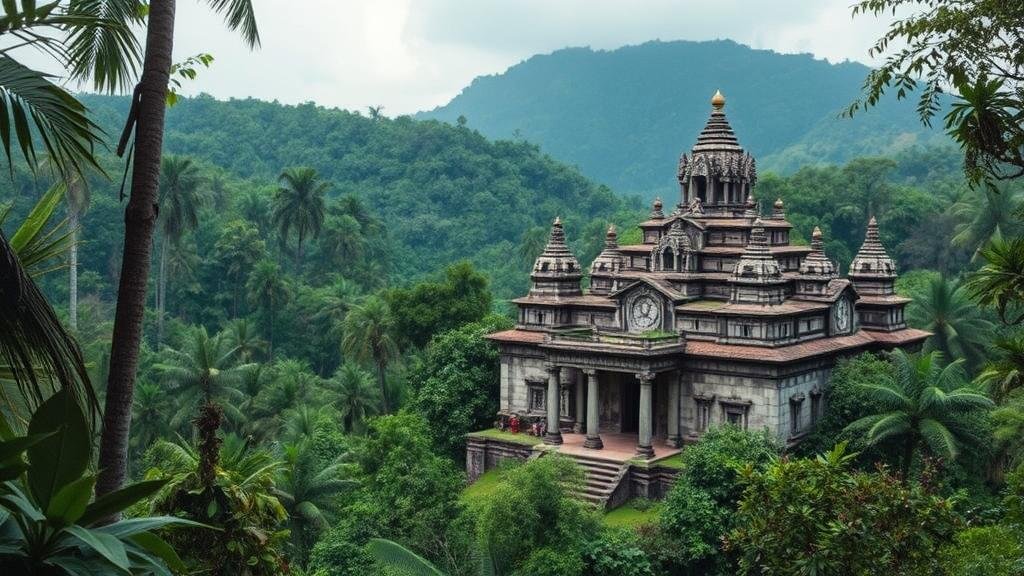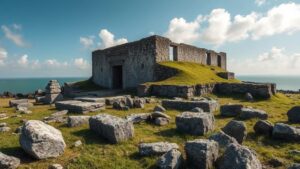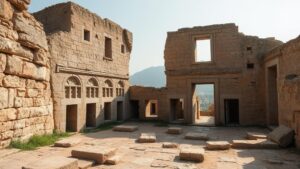The influence of local folklore on guiding archeological exploration in jungles.
The Influence of Local Folklore on Guiding Archaeological Exploration in Jungles
The intertwining of local folklore and archaeological exploration represents a fascinating crossroads of culture, history, and discovery. In jungles around the world, tales passed down through generations can illuminate the paths that archaeologists take, shaping their search for ancient civilizations. This article delves into how local legends influence the understanding of archaeological sites, enrich the exploration experience, and potentially lead to significant discoveries.
The Power of Folklore as a Guide
Folklore, defined as the traditional beliefs, customs, and stories of a particular community, serves as an invaluable resource for archaeologists. e narratives often contain kernels of truth that reflect historical events, locations of significance, or the existence of sites long forgotten. For example, the stories of lost cities embedded in local culture can provide archaeologists with critical clues about where to focus their efforts.
- The search for the legendary city of El Dorado has captivated explorers for centuries, driven by local myths of a city overflowing with gold, believed to be situated somewhere in the jungles of South America.
- In 2015, researchers in the Amazon rainforest gained insight from local folklore regarding the existence of a pre-Columbian civilization, ultimately discovering extensive earthworks resembling those built by the ancient culture.
Case Studies of Folklore in Archaeological Discoveries
Several high-profile archaeological projects have been significantly influenced by local folklore. Notably, the journey to uncover the secrets of the ancient Maya civilization has often relied on legends shared by local populations.
- In 1842, American explorer John Lloyd Stephens, together with artist Frederick Catherwood, fueled their expeditions in Central America by using local stories that hinted at the remains of ancient Maya cities hidden in the jungles of modern-day Guatemala. r work not only substantiated the existence of cities like Tikal but also ignited global interest in Maya archaeology.
- In 2012, a collaboration between local Ecuadorean communities and archaeologists led to the discovery of an ancient ceremonial site that folklore suggested was the site of sacred rituals. This unveiling revealed artifacts dating back to 500 BCE, offering insights into pre-Hispanic cultures in the region.
The Role of Technology in Bridging Folklore and Archaeology
Advancements in technology have greatly enhanced the ability of archaeologists to validate and explore local legends. LiDAR (Light Detection and Ranging) technology is one such innovation, allowing researchers to penetrate dense vegetation and uncover archaeological features without disturbing the ecosystem. This synergy of folklore and technology has led to significant archaeological breakthroughs.
- A noteworthy example includes the use of LiDAR to reveal the previously hidden remnants of the ancient Maya metropolis, revealing over 60,000 structures and confirming aspects of local legend regarding monumental urban centers.
- In the Brazilian Amazon, researchers combined satellite imagery and local tales to locate geoglyphs — massive geometric earthworks often associated with Indigenous legends — shedding light on the complex intersections of ancient societies and their landscapes.
Challenges and Ethical Considerations
While folklore can guide archaeological exploration, it also presents challenges. The interpretation of local legends is subjective and can vary significantly between communities. Misinterpretations can lead to misguided excavations, ultimately undermining the credibility of archaeological work.
Also, ethical considerations arise regarding the ownership of cultural narratives and archaeological findings. Engaging local communities in the archaeological process can foster mutual respect and collaboration, allowing for a cooperative exploration that honors both scientific inquiry and cultural heritage.
Actionable Takeaways
- Archaeologists should unearth local legends as part of their foundational research, integrating cultural insights with scientific methodologies to enhance exploration efforts.
- Engagement with local communities should be prioritized, promoting an inclusive approach to archaeological exploration that acknowledges and respects indigenous knowledge.
- Continued investment in technological advancements like LiDAR can expand access to hidden archaeological sites without harming fragile ecosystems.
In summary, the influence of local folklore on archaeological exploration in jungles is both profound and essential. By fostering a dialogue between ancient stories and modern science, archaeologists can uncover lost histories while honoring the rich cultural tapestries of the communities that hold these stories dear. Through cooperative efforts, the quest for knowledge continues — paving the way for a deeper understanding of our shared past.


